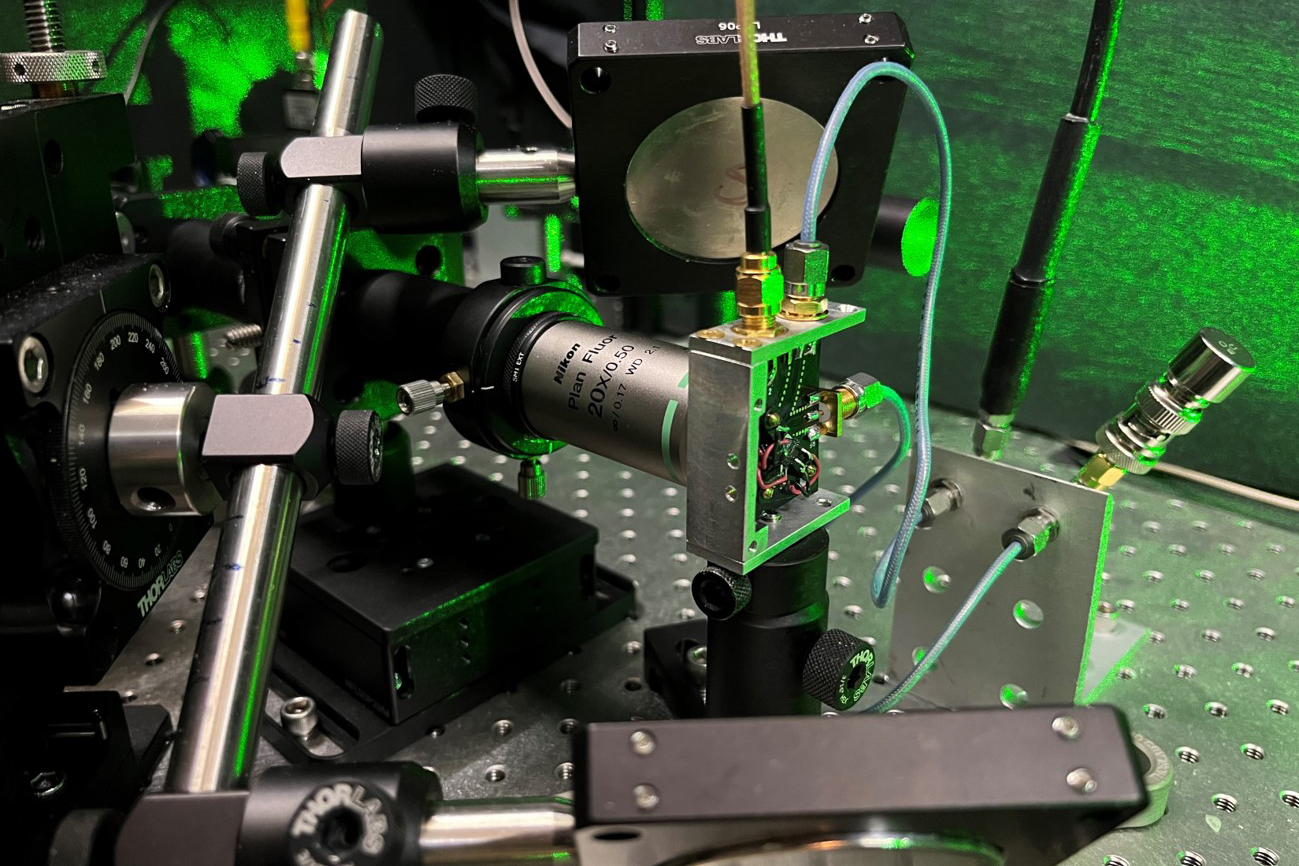Quantum sensors for electromagnetic signals of any frequency

MIT researchers have developed a method to enable quantum sensors to detect any arbitrary frequency, with no loss of their ability to measure nanometer-scale features. Quantum sensors detect the most minute variations in magnetic or electrical fields, but until now they have only been capable of detecting a few specific frequencies, limiting their usefulness. Image: Guoqing Wang

(a) Quantum frequency mixing schematic. The effective Hamiltonian (red) emerges from the frequency mixing of the signal (purple) and bias (green) Hamiltonians. The effective Hamiltonian frequency 𝜔𝑇 can be probed experimentally. (b) Electron spin resonance (ESR) experiment to probe 𝜔𝑇 using an ensemble of NV centers. We sweep the bias field frequency 𝜔𝑏 to detect the presence of a signal field at 𝜔𝑠=(2𝜋)150 MHz, which is not in the accessible range of typical sensing methods. We observe a resonance when the down-converted frequency 𝜔𝑇 =±(𝜔𝑠 −𝜔𝑏) matches the probing drive amplitude at Ω=(2𝜋)3 MHz.

